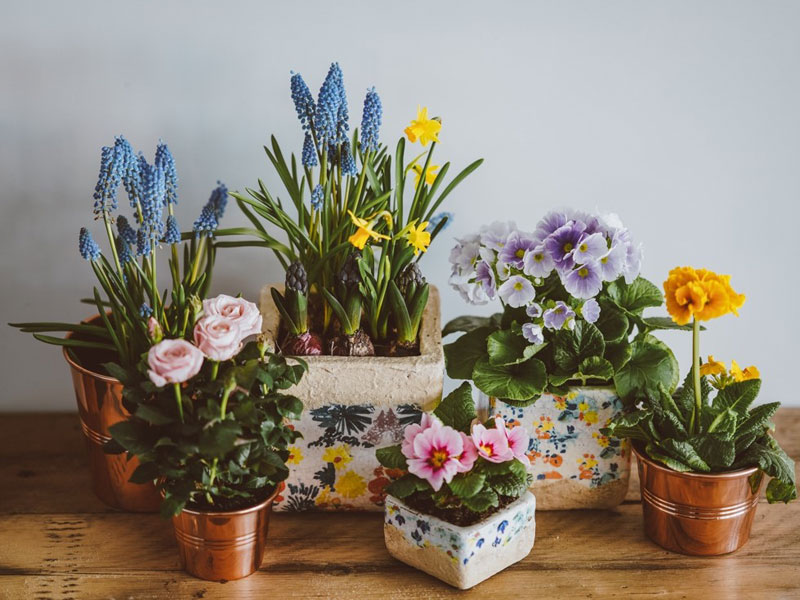Whether you’re thinking about becoming a houseplant owner for the first time, starting up your houseplant maintenance again, or you’re just trying to pick up a few pointers, there are all sorts of ways to optimize your indoor plants’ health.
While this maintenance can feel a little overwhelming, most plants actually don’t need constant attention and care to remain healthy. Other than remembering to water your plants, there are plenty of other simple tips you can try.
Read on to not only bring your indoor houseplants to life, but to keep them thriving all winter along!
Pick Plants That Work with Your Schedule
If you’re getting new houseplants, but don’t know which one(s) to select, it’s important to remember that you’re going to have to invest time and energy into maintaining them. Busy work schedules, social life, and other obligations can all understandably get in the way of your plant care.

If you’re not home often or perhaps don’t want to make too much of a commitment, it might be a good idea to go for drought-tolerant plants such as succulents, snake plants, and ZZ plants. As long as they have enough light, they should do alright, even after a vacation or weekend away.
Pick Plants That Work with Your Lighting Situation
When selecting plants, it’s important to know not only how much light your plant type needs, but how much you can provide it. First, it goes a long way to know what direction your windows face.
South-facing windows give bright light, east and west-facing windows give moderate light, and north-facing windows give low light. Once you figure out what direction your windows face, you can figure out what plant type is right for you.
If you have anything obstructing your windows, such as buildings, trees, etc., you’ll want to consider how this impacts how much light your plants will receive.

Properly Water Your Plants
All houseplants have slightly different watering requirements depending on their growth. One tip for watering is to not do it on a set schedule, but when your plants really need it.
Basically, plants grown in soil that’s drained properly should be watered when the top half inch to inch of soil feels dry. If you’re wondering how much watering is needed per plant type, cacti and other succulent variations typically need less water while flowering plants need slightly more.
One important thing to note is that overwatering is one of the most common causes of houseplant death. If you’re not sure how much to water, it’s best to keep things on the dry side rather than to overdo it.

Raise Humidity Levels When Necessary
Adjusting the environmental conditions of your house to your plant’s natural needs will help it to thrive indoors. Tropical plants typically prefer a higher level of humidity along with indirect, but bright light.
One tip is to group similar plants together as this helps to create a more humid climate. If you have a humidifier, this can help both your plants and yourself, especially in the winter! Contrary to tropical plants, cacti and succulents prefer dry air and direct, bright light.
Periodically Fertilize Your Houseplants
Like watering, there isn’t really an easy way to know how much to fertilize your plants. Typically, it depends on the plant’s growth rate, age, and the time of year.
Most houseplants put on a growth spurt in spring and summer, so this is the best time to fertilize them. During the short days of fall and winter, however, most houseplants don’t need much, if any, fertilizer.
Aside from this, it’s a good idea to check your houseplants for any labels that provide additional direction for fertilization needs. You also don’t want to over fertilize your houseplants as this can burn the roots and throw off their growth.

Make Sure There’s Drainage
One thing to keep in mind while watering your plants is drainage. If you tend to water your plants more often or more heavily, this is especially important. If you tend to overwater, we recommend finding a plant container that has a drainage hole and a saucer underneath. This way, excess water has a place to flow to after draining through the layers of soil. Just be sure to monitor the saucer from time to time to ensure there isn’t standing water.
Some of the most common reasons plants die are inadequate quantities of watering, inadequate light levels, and neglect. Although houseplants aren’t the most time consuming to maintain, they do require effort and energy to ensure they have a good growing environment.
Following the tips above will certainly help your plants not only survive, but thrive! Once you get a routine down with your houseplants, you can become even more adventurous with the types of plants you want to add to your indoor collection.
For more information on houseplant care, check out these blogs:





